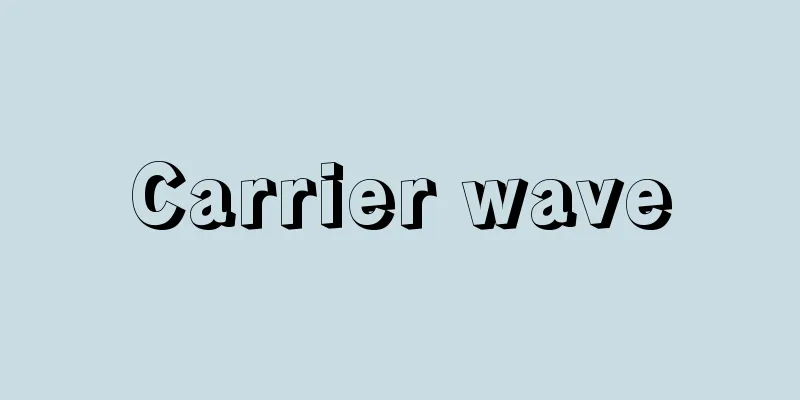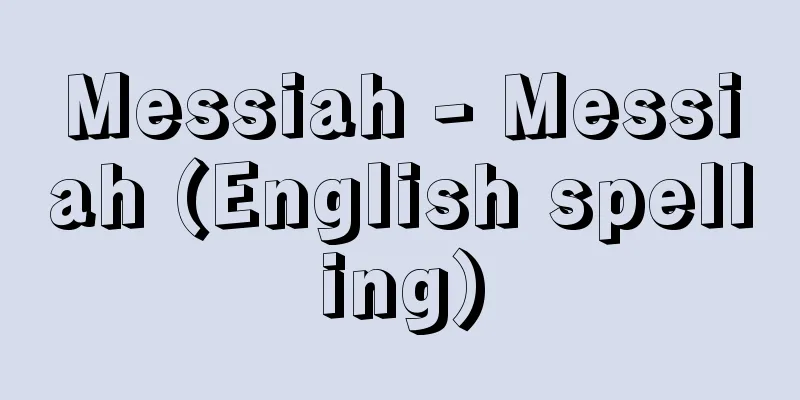Vision - Vision (English/French), Gesichtssinn (German)

|
Vision is the function of detecting optical signals input to the eye and inferring the structure of the external world and the properties of objects based on the information contained in the optical signals. Before our eyes, a vast world appears to be unfolding with numerous three-dimensional objects of various brightness and colors moving about in various ways. Meanwhile, the organs that receive visual stimuli are the eyes, and the starting point for calculations is the information obtained by converting the retinal images optically projected onto the retinas of both eyes into biological signals. Visual information processing is the task of making the most appropriate inference about the structure of the external world that surrounds us using information from the eyes, and the mental system responsible for this is the visual system, and our visual world is the mental representation of the results of this inference in the most convenient form for daily life. The visual world thus created is so rich that it is easy to feel as if one is looking at the retinal image itself, but for the following reasons, it can be concluded that the essence of our visual experience is the result of the analysis of visual information in the brain. First, the visual information obtained as a retinal image is constantly fluctuating with eye movement, and the resolution is low except for the area around the fovea, which corresponds to the center of the visual field, and information is missing in the shadow areas of the optic disk and retinal vasculature, which correspond to the blind spot of the visual field. Nevertheless, the world we are conscious of is stable, continuous, and clear. Secondly, neuropsychological symptoms that would not occur if we were directly conscious of the retinal image can occur, such as distortion of objects, double vision, and a lack of sense of distance, even when there is nothing abnormal with the eyes, in which only certain visual functions are impaired. Thirdly, if the retinal image is displayed as is in the mind, there is the philosophical problem of who would analyze it. If we imagine that the images in the mind are viewed and analyzed by a homunculus, a dwarf entity within the mind, the same problem would arise within the mind of the homunculus, leading to an infinite regress. There are many theories about how the visual world is constructed, and it is waiting to be elucidated. A certain belief or "prediction about the outside world" is formed about the most plausible way the world is based on "knowledge about the world" and "retinal image input data obtained up to now." This belief is constantly verified against new data that is input from moment to moment, and if a prediction error occurs, it is updated to a new belief. Within this general framework proposed by neuroscientists and cognitive philosophers such as Friston, K., what type of model is represented where in the brain and how it corresponds to our visual consciousness is a major issue in exploring the neural correlate of consciousness (NCC). [Ill-posed problems and natural constraints] The information contained in the retinal image is completely insufficient to calculate the structure of the external world. To give a typical example, since the retinal image is a two-dimensional projection image, the depth dimension is lost, and there are infinite possibilities for three-dimensional external structures that can produce the same retinal image. For example, if there is a square retinal image, the external object that causes it may be a square on the fronto-parallel plane, a rectangle tilted in the depth direction, or a rectangular prism or pyramid placed at a specific angle. In addition, when surface reflected light is obtained from an object, the spectral distribution of the external illumination light that causes it, and the relationship between the amount of light, the spectral reflectance of the object, and the angle of incidence cannot be specified. The reflected light of an object with a certain light intensity may be the result of dark lighting hitting a white surface, or the result of bright lighting hitting a dim surface, or the amount of reflected light may be small because bright lighting hits a white surface at an angle. A computational problem for which the solution cannot be uniquely determined from the given information alone is called an ill-posed problem, and it is necessary to estimate the optimal solution. The visual information processing system is constantly exposed to ill-posed problems, and solutions are narrowed down by various natural constraints, which are assumptions about the external world. Two important examples are perceptual constancy, which states that the properties of things should not change easily, and prior probability, which states that the statistics of natural images should follow a specific distribution. [Subdivision of vision] Vision is a large sensory modality that involves a huge amount of information processing, so it is sometimes important to understand it in detail. Many researchers, including Fodor, have proposed functional modularity, which means that different sensory attributes are processed by independent devices. Dividing it up by sensory attributes such as brightness, color, texture, motion, and depth has helped us understand it, and research on each has progressed independently. It can also be divided by the computational content that is thought to be mediated by different processing routes, such as the division between spatial vision and form vision, and the division between action and recognition. In addition to this parallel division, a hierarchical division based on differences in research fields is also possible. First, there is the field of ophthalmological optics, which mainly describes the process up to the point where an image is formed on the retina. Next, there is the field of low-level vision, which deals with the biological information representation of visual signals by making extensive use of engineering concepts such as filters and parallel-coupled elements. In contrast to these, there is the field of high-level vision, which deals with higher-order functions such as active attention, object recognition, scene analysis, and visual memory. Therefore, even when describing various characteristics such as space and time in a general sense, it is difficult to give a unified explanation because the characteristics differ greatly depending on the attributes and hierarchies being treated. [Spatial characteristics] In primates such as humans and monkeys, the retina has a fovea, which provides the highest resolution in the center of the visual field, with visual acuity worsening as one moves toward the periphery. Grating acuity, one way of assessing visual acuity, is indexed by the finest stripes that can be resolved. The fineness of the stripes is described by how many periods of luminance modulation there are per degree of visual angle, and this is called spatial frequency. However, spatial frequency does not only apply to stripe patterns, but is a general concept that describes how many periods of modulation there are along a specific azimuth axis in the visual field. If the measurement of fringe acuity is expanded to measure the minimum luminance contrast required to detect a sinusoidal luminance modulation as a function of spatial frequency, the high-cutoff frequency of the resulting curve corresponds to fringe acuity, and the entire curve is called the spatial contrast sensitivity function. Although it varies depending on the average luminance, stimulus size, retinal location, etc., in photopic vision, this function is a band-pass inverted U-shaped curve with a peak at approximately 3 to 5 cpd (cycles per degree) in central vision, and the peak frequency shifts to lower frequencies as one moves toward the periphery of the visual field. In scotopic vision, it becomes a low-pass type with no loss of sensitivity at low frequencies. It is believed that the mechanism that produces the spatial contrast sensitivity function is not single, but involves multiple spatial-frequency channels with limited passbands and different optimal frequencies. In order to construct as meaningful an information representation as possible from poor visual input with a poor signal-to-noise ratio and missing values, the visual system performs various characteristic spatial processing, and various visual phenomena reflecting these have been reported. One example is simultaneous contrast of brightness and color, in which a surface of the same luminance appears brighter when surrounded by dark surfaces, and darker when surrounded by bright surfaces. Contrast also occurs in the attributes of texture, motion, and depth. This contrast effect is thought to be related to the function of emphasizing spatial changes. Another example is perceptual filling-in, in which in an area with unclear contours, the brightness and color of the surrounding area seem to encroach on the entire interior of the area. Filling in the blind spot is a typical example, but it can also occur when a blurred contour is continuously viewed in the peripheral visual field, as in the Troxler effect, and can be said to be a general characteristic of the visual system. Filling in texture, motion, and depth has also been reported. A visual illusion refers to a phenomenon in which the physical structure of a stimulus image does not match the way it appears when observed. Numerous geometrical illusions have been reported since ancient times, and there are countless examples of retinal images not matching our perceptions of length, size, and other aspects. Even when observing an illusory figure, our visual information processing system must have a computational circuit at work that tries to estimate the structure of the outside world as accurately as possible from poor input. And because many optical illusions, including geometric illusions, have a unique relationship between input and output, they are useful experimental materials that can provide clues to the principles of such computational circuits. [Temporal characteristics] The temporal contrast sensitivity function can be measured by modulating the luminance over time. Although it differs depending on the average luminance, stimulus size, and retinal location, the shape of this function is generally a bandpass inverted U-shaped curve with a peak at approximately 5-15 Hz, but the high-frequency cutoff frequency is generally 50-60 Hz, which is called the critical flicker frequency. If only the color information is modulated without changing the luminance, it changes to a lowpass type, and the color critical flicker frequency is approximately 15 Hz. Just as there is spatial simultaneous contrast, there is also a transient phenomenon of successive contrast of brightness and color in time, where the same gray color will appear brighter after a dark stimulus has been presented in the same area, and darker after a bright stimulus has been presented. This bias in perception toward the opposite side of the previous stimulus is generally called a negative aftereffect, and is known to occur for many types of attributes, including not only brightness and color but also orientation and motion, and the occurrence of a specific aftereffect is taken as evidence of the existence of a mechanism for processing that attribute specifically. Regarding the recognition of time itself from visual information, there are examples of research in which two stimuli are presented and simultaneity or time order judgments are made, but unless the stimulus presentation situation allows the time difference between the two stimuli to be detected by binocular disparity or a movement mechanism, the discrimination ability of visual time differences is much lower than that of auditory. As with auditory stimuli, there are common characteristics across multiple senses regarding the perception of time intervals, such as stimuli that contain a wealth of variation being perceived as longer. [Attention and consciousness] Even if an image is projected onto the retina and processed by early neural mechanisms, it is not always possible to perceive the visual image as a conscious experience. Binocular rivalry is a good example of this, but in its extreme form, when a dynamically switching stimulus is continuously presented to one eye, the stimulus presented to the other eye does not reach consciousness for a long period of time, which is called continuous flash suppression. In addition, not only in binocular split vision but in general, in a situation where a stimulus that is easy to pay attention to is present, it becomes difficult to become aware of the presence of other objects or changes in the object. These phenomena are called inattentional blindness and change blindness, respectively. As with the reversal of figure and ground in ambiguous figures, the phenomenon in which the awareness of a visual object changes despite the same retinal image being input should reflect a change in the state of the brain, and such situations are useful research material for empirically exploring the neural correlates of consciousness. [Multisensory interaction] Vision and bodily motion sensations are closely related. For example, even though the head is constantly moving around on a daily basis, a relatively stable retinal image is obtained by eye movement called the vestibulo-ocular reflex, which compensates for head rotation. If you rotate your head while staring at a fixation point in front of your eyes that is fixed in a position relative to your head, the reflex is suppressed, but in this case an oculogyral illusion occurs in which the fixation point appears to move in the direction of the rotation. As an example of bodily motion sensations being evoked by visual information, when there is movement in a wide area of the visual field, you feel an illusion called vection, in which your body moves in the opposite direction. In addition, when vection occurs, the center of gravity may sway when you are standing. If you move your center of gravity against vection, your postural stability will naturally be impaired, so the center of gravity is re-corrected by signals from the vestibular organs and proprioceptive organs, and this repetition is thought to result in center of gravity sway. The ventriloquism effect, in which the localization of a sound image is biased toward the position of the speaker's image, is a good example of a multisensory interaction known as visual capture, in which hearing is influenced by vision. However, visual experiences are also influenced by the presence of stimuli from other sensory modalities. For example, in the double-flash illusion, when a single flash of light is lit and two clicks are presented almost simultaneously, the light appears to be lit twice. This is an example of the time perception of a visual object being altered by an auditory signal with excellent time resolution. In addition, when observing a figure with an ambiguous direction of movement, if you move your arm in a certain direction, the direction of the movement of the figure may appear to be pulled in the direction of your arm's movement. [Neural mechanisms] These diverse visual functions are supported by sophisticated biological mechanisms. Optical images from the outside world are roughly refracted by the cornea of the eye, and after fine adjustment of the refraction in the lens, they pass through the vitreous body, a transparent gel-like tissue, and are focused on the retina. The lens adaptively changes its refractive index with the force of the ciliary muscle. The pupil diameter is adaptively changed by the pupillary sphincter and pupillary dilator muscles, and pupil constriction caused by various factors including light reaction has the function of reducing the amount of incident light and increasing the focal depth. In the photoreceptors in the outermost layer of the retina, the cell membrane hyperpolarizes in response to an increase in the amount of received light, and photoelectric conversion is performed. Furthermore, the outer layer is adjacent to the pigment epithelium, which is rich in melanin pigment, and prevents diffuse reflection. The outer segments of photoreceptors are made up of many overlapping membranes, each of which contains a photosensitive molecule, a protein containing retinal, a type of vitamin A. This molecule is called photopigment. In response to an increase in the amount of light, the structure of the photopigment changes, triggering a chain of biochemical reactions that increase the probability of closing the sodium channel in the cell membrane and change the membrane potential to hyperpolarized. Photoreceptors are broadly divided into two types: cones, which work in bright light, and rods, which work in dark light. Cones include L cones, M cones, and S cones, and each photopigment has a different sensitivity to light wavelengths (spectral sensitivity), with maximum sensitivity at 560 nm, 530 nm, and 425 nm, respectively. These three types of cones are the first neural basis for color vision in photopic vision. Rods only have one type of photopigment with a maximum sensitivity at 495 nm, so color cannot be seen in scotopic vision, but the photoelectric conversion efficiency is extremely high. That is, in one visual pigment, retinal is stereoisomerized from the 11-cis form to the all-trans form after absorbing light energy, and the protein changes structure from rhodopsin to metarhodopsin, activating hundreds of G proteins (transducins) in the intracellular fluid, each of which activates a phosphodiesterase, each of which decomposes cyclic GMP that acts on the membrane channel at a speed of hundreds of molecules per second, amplifying the signal through a reaction chain (cascade amplification). Therefore, a single photon hitting the visual pigment can cause a change in the membrane potential. The boundary between photopic and scotopic vision is called mesopic vision, and both cones and rods contribute to it. Changes in the membrane potential of photoreceptor cells cause changes in the amount of neurotransmitter released at the synapse, which causes changes in the membrane potential of the next bipolar cell. Unlike photoreceptor cells, bipolar cells have OFF-type cells that respond hyperpolarized to increased light intensity, and ON-type cells that respond depolarized. These membrane potential changes excite the next retinal ganglion cell via the synapse, changing the probability of action potential generation. Here too, there are OFF-type cells that respond excitatory to dim light and ON-type cells that respond excitatory to bright light. These serial transmission pathways are also modified by interneurons, with adjacent photoreceptor cells and bipolar cells being connected horizontally by horizontal cells, and adjacent bipolar cells and retinal ganglion cells being connected horizontally by amacrine cells (Figure 1). The axons of retinal ganglion cells penetrate the optic disc and extend from the eye to the brain as optic nerve bundles, and after hemi-chiasming at the optic chiasm (the neurons on the temporal and nasal sides of the retina connect to the ipsilateral and contralateral cerebral hemispheres, respectively), they change name to optic tracts, of which some terminate at the lateral geniculate nucleus (LGN) of the thalamus in the diencephalon, while others connect to the pulvinar via the superior colliculus in the midbrain. The former connect to the primary visual area (V1) of the cerebral cortex via the optic radiation and contribute to information processing in the brain related to conscious vision, while the latter connect to the subcortical nuclei and are thought to mainly mediate eye movements and various visual reflexes. Primate retinal ganglion cells are classified into parasol cells, which have high temporal resolution and low spatial resolution, midget cells, which have high spatial resolution and low temporal resolution, and other cells. Parasol cells project to the magnocellular layer of the LGN, and midget cells project to the parvocellular layer, and some cells project to the granule cell layer between these layers. A very small proportion of retinal ganglion cells are photosensitive and directly receive light to generate action potentials. Signals sent by these intrinsically photosensitive retinal ganglion cells (ipRGCs) are sent to the suprachiasmatic nucleus and were thought to be visual synchronizing factors that form circadian rhythms, but it has been suggested that they may also be involved in other visual functions. The magnocellular layer of the LGN projects to the 4Cα layer of the V1 area, the parvocellular layer to the 4Cβ layer, and the granule cell layer to layers 1-3. From the V1 area onwards, information processing proceeds hierarchically in many cortical areas collectively known as the previsual area (V2, V3, V4, etc.). The neural connections of the magnocellular system are connected to the dorsal pathway (the "where" pathway in Mishkin's classification) consisting of the MT, MST, and LIP areas of the previsual area, and are involved in movement, depth, and spatial orientation. In contrast, the neural connections of the parvocellular system are connected to the V4 area, the inferior temporal cortex (IT), and the ventral pathway (the "what" pathway) which is further divided into the LOC, FFA, PPA, and EBA in the human brain, and are involved in color, three-dimensional shape, and object recognition (Figure 2 on page 248). There are mutual connections between these two pathways, and within each pathway, there are bidirectional connections between the upper and lower areas. Each hemifield is represented in the contralateral cerebral hemisphere, and information is exchanged between the hemifield representations via the corpus callosum that connects the two hemispheres. If different sensory attributes such as color and motion are processed by different neural circuits, then it is necessary to somehow link the results of these processes to achieve unified object recognition. There is a theory that the state in which neural networks interconnected by nerve fibers oscillate synchronously plays a role in solving this binding problem. Each visual neuron has a receptive field and responds only to light stimuli in a certain area of the visual field. The receptive fields of many midget cells are concentric, with the center of the receptive field being excited by light on and the periphery being excited by light off (center-periphery antagonistic type). Alternatively, the receptive field may have a polarity opposite to this, with the response characteristics of the center and periphery of the receptive field differing. In addition to the sustained response component to sustained light intensity, there is a transient response component to temporal changes in the amount of light. Visual neurons in the cerebral cortex have a more complex receptive field structure. Orientation-selective neurons have a preference for light stimuli with a specific inclination, direction-selective neurons for light stimuli that move in a specific direction, color-selective neurons for specific colors, and disparity-selective neurons for specific binocular disparities. As one moves to higher-order areas, the selectivity for stimuli becomes more complex. For example, neurons have been found in monkey IT (inferior temporal area) that respond only to hand-like shapes, and selective activity is increased in monkey IT and human FFA (fusiform face area) in response to face stimuli. [Visual abnormalities] Correct focusing of the image on the retina is called emmetropia, and refractive errors with a focus closer or further away are called myopia and hyperopia, respectively. Presbyopia refers to the blurring of images when looking at something close due to a decrease in the elasticity of the crystalline lens caused by aging. While these refractive errors can be restored by optical correction, amblyopia occurs due to strabismus, asymmetry in refraction between the left and right eye, and visual obstruction during development. It is a condition in which the abnormal eye has low visual acuity, and the cause cannot be found in the optical system of the eye. Low vision, including amblyopia, is a collective term for disorders that are difficult to restore through optical correction and have poor visual function, making it difficult to live a social life. There are many cases of people suffering from symptoms such as visual field constriction and scotoma, which are suspected to be related to age-related degeneration of the retina and macular pigment in the eye, and are particularly problematic in today's aging society. Many visual cognitive disorders caused by dysfunction of the visual nervous system have been reported. These include cerebral color blindness, in which only color recognition is impaired, and disorders in which only the movement of objects is not recognized. Disorders of shape recognition include image agnosia, in which the patient does not know what a picture is, object agnosia, in which the patient does not know what real object it is, prosopagnosia, in which the patient does not know whose face it is, streetscape agnosia, in which the patient does not know which street it is, and alexia, in which the patient cannot read or read aloud. Disorders of spatial recognition include constructional disorder, in which the patient is unable to draw a picture, visuomotor ataxia, in which the patient is unable to make reaching movements with the hand toward a goal, and topographical disorientation, in which the patient gets lost in a familiar place. Disorders of attention include extinction, in which the patient ignores one of two objects (usually the left side) when two objects are presented simultaneously in the left and right visual fields, hemispatial neglect, in which the patient ignores one side of the visual field or object (usually the left side), dorsal simultaneity agnosia, in which the patient is unable to pay attention to multiple objects at the same time, and ventral simultaneity agnosia, in which the patient is unable to instantly grasp the overall meaning of multiple objects. In addition, symptoms that are different from agnosia and involve the mistaken recognition of an object include visual perseveration, in which an object appears to remain in the visual field even after it has disappeared, visual hallucinations in which lights or objects that do not exist are seen, and metamorphopsia, in which the shapes of objects appear distorted. The relationship between these neuropsychological symptoms and the cerebral cortical areas is being investigated. →Perception of brightness →Color →Sensation →Eye movement →Constant phenomena →Illusion →Visual stimuli →Visual areas →Visual field →Adaptation →Perception →Binocular vision [Ikuya Murakami] (Carson, NR, original work, supervised translation by Masato Taira and Katsuki Nakamura, Carlson's Neuroscience Textbook: Brain and Behavior, 4th ed., Maruzen Publishing, 2013, with some modifications) Figure 2 Visual pathway (Pinel, J., Translated by Sato, Kei, et al., "Pinel's Biopsychology of the Brain: The Neuroscience of Mind and Behavior," Nishimura Shoten, 2005) Figure 1. Structure of the retina Latest Sources Psychology Encyclopedia Latest Psychology Encyclopedia About Information |
|
視覚とは,眼に入力された光信号を感知し,さらに光信号に含まれる外界の情報を基に外界の構造や事物の性質を推定する機能である。われわれの眼前には,さまざまな明るさや色をもち多様に動き回る多数の3次元物体が広々とした世界に展開しているように見える。一方,視覚刺激を受容する器官は眼であり,両眼の網膜に光学的に投影された網膜像retinal imageを生体信号に変換した情報が計算の出発点となる。われわれを取り巻く外界構造のあり方に関して,眼からの情報を材料にして最も妥当な推定を行なう作業が視覚情報処理visual information processingであり,それを担う心的システムが視覚系visual systemであり,その推定結果を最も生活に便利な形式で心内に表象したものこそがわれわれの視覚世界visual worldである。 こうして成立した視覚世界があまりに豊かに感じられるので,網膜像そのものを眺めているかのように感じられがちだが,以下の理由から考えて,脳内で視覚情報の解析が行なわれた結果が,われわれの視覚体験の本質であると結論される。第1に,網膜像として得られる視覚情報は眼の動きに伴いつねに揺れ動き,視野中心に対応する中心窩fovea付近以外は解像度が低く,視野の盲点に対応する視神経円板optic diskや網膜血管系の影の部分においては情報が欠損しているにもかかわらず,われわれの意識する世界は安定的で連続的にくっきりと感じられる。第2に,網膜像を直に意識化しているなら生じないはずの神経心理学的症状として,眼に異常がなくても対象が歪む,二重に見える,距離感がない,など特定の視機能だけが損なわれることがある。第3に,もし心内で網膜像がそのまま映っているなら,いったいだれがそれを解析するのかという哲学的問題があり,心内の映像を心の中の小人的存在であるホムンクルスhomunculusが見て解析すると考えると,そのホムンクルスの心内で同じ問題が生じ,無限後退に陥ってしまう。 視覚世界がいかに構築されるかに関しては諸説あり,解明が待たれる。「世界に関する知識」および「現在までに得られている網膜像の入力データ」から考えられる最も妥当な世界のあり方に関して,ある種の信念belief あるいは「外界に関する予測」が形作られ,時々刻々入力される新しいデータと突き合わせてつねに検証され,予測誤差prediction errorが生じれば新しい信念へと更新される。フリストンFriston,K.はじめ神経科学者や認識哲学者が提唱するこのような大枠のもとで,いかなる形式のモデルが脳内のどこに表象され,われわれの視覚的意識にいかに対応するのかということは,意識の神経相関neural correlate of consciousness(NCC)を探究するうえで大きな問題である。 【不良設定問題と自然制約条件】 網膜像に含まれる情報は,外界構造を計算するのにまったく不十分である。典型例を挙げれば,網膜像は2次元投影像であるため奥行き次元が失われており,同じ網膜像をもたらしうる3次元外界構造には無限の可能性がある。たとえば正方形の網膜像があったとき,その原因となる外界の物体は前額平行面上の正方形かもしれないし,奥行き方向に傾いた長方形かもしれないし,あるいは直方体や四角錐が特定の角度に置かれているのかもしれない。また,ある物体からの表面反射光が得られた場合,その原因となる外界の照明光の分光分布,光量と物体の分光反射率と入射角度の関係は特定できない。ある光強度の物体反射光は,暗い照明が白い表面に当たった結果かもしれないし,明るい照明が薄暗い表面に当たった結果かもしれないし,明るい照明が白い表面に対して斜めに当たったために反射光量が少ないのかもしれない。与えられた情報だけでは解が一意に定まらない計算問題を不良設定問題ill-posed problemといい,最適な解を推定するという作業が必要になる。視覚情報処理系はつねに不良設定問題にさらされ,外界に関する仮定である自然制約条件natural constraintをさまざまにおいて解を絞っている。その重要な2例として,事物の性質は簡単に変わらないはずだとする知覚の恒常性perceptual constancyと,自然画像の統計量は特定の分布に従うはずだとする事前確率prior probabilityが挙げられる。 【視覚の下位区分】 視覚という感覚モダリティは膨大な情報処理を含む大きな概念なので,細分化して理解することが重要な場合がある。異なる感覚属性は独立した装置で処理されるという機能的モジュール性が,フォーダーFodor,J.はじめ多くの研究者によって提唱されたこともあり,明るさ・色・肌理・運動・奥行きなどの感覚属性で区分することが理解の助けになって,各々独立に研究が進んできた。また,空間視spatial visionと形態視form visionの区分や,行為actionと認識recognitionの区分など,異なる処理経路を介すると考えられる計算内容によっても分けられる。 このような並列的区分とは別に,研究分野の違いによる階層的区分も可能である。まず網膜に結像するまでを主に記述する眼光学ophthalmological opticsの分野があり,次にフィルターや並列結合素子などの工学的概念を多用して視覚信号の生体情報表現を扱う初期視覚low-level visionの分野がある。これらに対して,能動的注意,物体認識,シーン解析,視覚的記憶などの高次機能を扱う分野があり,これを後期視覚high-level visionとよんで区別することがある。したがって,ひとくちに空間や時間などの諸特性を記述するうえでも,扱う属性や階層によって大きく特性が異なるので統一的な説明は難しい。 【空間特性】 ヒトやサルなど霊長類では,網膜に中心窩があり視野中心が最も解像度が高く,視野周辺に行くにつれて視力が悪くなる。視力の評価の一つである縞視力grating acuityは,解像しうる最も細かい縞をもって指標とする。縞の細かさは視角1°当たり何周期の輝度変調があるかをもって記述し,これを空間周波数spatial frequencyという。ただし空間周波数は,縞模様だけに適用されるのではなく,視野内の特定の方位軸に沿った変調が何周期あるかを記述する一般的な概念である。 縞視力の測定を拡張し,正弦波の輝度変調が検出されるために必要な最小の輝度コントラストを空間周波数の関数として測定したならば,得られた曲線の高域カットオフ周波数が縞視力に相当し,曲線全体は空間的コントラスト感度関数spatial contrast sensitivity functionとよばれる。平均輝度・刺激サイズ・網膜部位などにより異なるが,明所視ではこの関数は中心視でおおむね3~5cpd(cycles per degree)をピークとするバンドパス型の逆U字型曲線となり,視野周辺に行くにつれてピーク周波数が低域にシフトする。暗所視では低周波側で感度の落ちないローパス型となる。空間的コントラスト感度関数をもたらすメカニズムは単一でなく,限られた通過帯域をもち,最適周波数の異なる複数の空間周波数チャンネルspatial-frequency channelが介在すると考えられている。 信号雑音比が悪く,欠損値も生じる貧しい視覚入力から可能な限り有意味な情報表現を構築するために,視覚系では特徴的な空間処理がさまざま行なわれており,それらを反映したさまざまな視覚現象が報告されている。その一つが明るさ・色の同時対比simultaneous contrastであり,同じ輝度の面であっても暗い面に囲まれた場合はより明るく,明るい面に囲まれた場合はより暗く感じられる。肌理・運動・奥行きの属性においても対比は生じる。この対比作用には,空間変化を強調する働きが関係すると考えられている。もう一つの例が知覚的充塡perceptual filling-inであり,輪郭がはっきりしない領域において,領域の周囲にある明るさや色などが領域内部全体に侵蝕するように感じる。盲点での充塡はその典型例だが,それ以外にもトロクスラー効果Troxler effectという名称でよばれるようにぼやけた輪郭を視野周辺で眺めつづけた場合などにも生じ,視覚系の一般的特性といえる。肌理・運動・奥行きの充塡も報告されている。 刺激画像の物理的構造とそれを観察したときの見かけが一致しない現象を指して,錯視visual illusionという。古来より数多くの幾何学的錯視geometrical illusionが報告されており,網膜像とわたしたちの長さ・大きさなどの種々の知覚が一致しない例は枚挙にいとまがない。錯視図形を観察している際も,われわれの視覚情報処理系では,貧しい入力から可能な限り外界構造を正しく推定しようという計算回路が働いているはずである。そして,幾何学的錯視をはじめとする数多くの錯視現象は,入力と出力との関係が特異であることから,そのような計算回路の原理にヒントを与えてくれる有効な実験材料である。 【時間特性】 時間的に輝度を変調させて,時間的コントラスト感度関数temporal contrast sensitivity functionを測定することができる。平均輝度・刺激サイズ・網膜部位などにより異なるが,この関数の形状はおおむね5~15㎐をピークとするバンドパス型の逆U字型曲線を呈するが,高域カットオフ周波数はおおむね50~60㎐であって,これを臨界ちらつき頻度critical flicker frequencyという。輝度を変えず色情報のみを変調させた場合はローパス型に変わり,色の臨界ちらつき頻度color critical flicker frequencyは約15㎐となる。 空間的な同時対比があるように,時間的にも明るさや色の継時対比successive contrastという一過性の現象があり,同じ灰色でも,同一領域に暗い刺激が呈示されていた後では明るく見え,明るい刺激が呈示されていた後では暗く見える。このように以前の刺激と逆の側に知覚がバイアスされることを一般に陰性残効negative aftereffectといい,明るさや色だけでなく方位の傾きや運動など多種の属性において生じることが知られ,特異的な残効が生じることをもって,その属性を特異的に処理するメカニズムが存在する証拠とされる。 視覚情報から時間そのものを認識することに関しては,二つの刺激を呈示して同時性判断や時間順序判断を行なう研究例があるが,2刺激の時間差が両眼視差や運動のメカニズムによって検出されるような刺激呈示事態でない限り,聴覚に比べて視覚の時間差の弁別能ははるかに低い。時間間隔の知覚に関しては聴覚刺激と同様,変化が豊かに含まれる刺激は知覚的に長く感じるなど,多感覚にわたり共通した特徴がある。 【注意と意識】 網膜に像が投影され,初期の神経メカニズムによって処理がなされたとしても,つねに意識体験として視覚像が感じられるとは限らない。両眼視野闘争binocular rivalryはその好例だが,その極端な形としては,一方の眼に動的に切り替わる刺激を呈示しつづけると,他方の眼に呈示された刺激が意識に上らない状態が長時間持続し,これを連続フラッシュ抑制continuous flash suppressionという。また,両眼分離視に限らず一般に,注意を向けやすい刺激が存在する状況下ではそれ以外の対象の存在や,対象の変化が意識化されにくくなる。これらの現象はそれぞれ非注意による見落としinattentional blindness,チェンジ・ブラインドネスchange blindnessとよばれている。多義図形における図と地の反転と同じく,同じ網膜像が入力されていながら視覚対象が意識化されるか否かが変わるという現象は,脳内の状態の切り替わりを反映しているはずであり,このような事態は意識の神経相関を実証的に探究するうえで有用な研究材料である。 【多感覚相互作用】 視覚と身体運動感覚には密接なかかわりがある。たとえば,頭部が日常的につねに揺れ動いているにもかかわらず,頭部回転を補償する作用のある前庭動眼反射vestibulo-ocular reflexという眼球運動によって,ある程度安定的な網膜像が得られている。頭部に対して固定的な位置に置かれた眼前の固視点を見つめながら頭部回転をすると,反射は抑制されるが,この場合は固視点が回転方向側に動いているような眼球旋回錯視oculogyral illusionが生じる。視覚情報から身体運動感覚が惹起される例としては,視野の広い領域に動きがあると反対方向に自分の身体が動いていくようなベクションvectionという錯覚を感じる。また,ベクションが生じるのに伴い立位において重心動揺が生じることがある。ベクションに対抗して身体重心を移動すると姿勢安定が当然損なわれるため,前庭器官や自己受容感覚器からの信号で重心の再補正が行なわれ,この反復が重心動揺となると考えられる。 音声の音像定位が話者の映像の位置にバイアスされて錯誤される腹話術効果ventriloquism effectは,聴覚が視覚に影響されるビジュアル・キャプチャーvisual captureと総称される多感覚相互作用の好例だが,視覚体験もまた他の感覚モダリティの刺激の存在によって左右される。たとえば二重フラッシュ錯覚double-flash illusionという現象では,フラッシュ光を1回だけ点灯し,それとほぼ同時にクリック音を2回続けて呈示すると,光が2回点灯したように錯覚される。これは時間解像度に優れた聴覚信号に依存して,視覚対象の時間知覚が変容する例である。また,運動方向が曖昧な図形を観察する場合,自分の腕をある方向に動かすと,図形の運動方向が腕の運動方向に引っ張られて見えることがある。 【神経メカニズム】 このような多様な視覚機能は,精緻な生体メカニズムに支えられている。外界からの光学像は眼の角膜corneaで粗な屈折を受け,水晶体lensにおいて屈折の微調整を受けた後,透明なゲル状組織である硝子体vitreous bodyを通過して網膜に結像する。水晶体は毛様体筋の力で屈折率を適応的に変化させる。瞳孔径は瞳孔括約筋・瞳孔散大筋により径が適応的に変化し,対光反応をはじめとする種々の原因で生じる縮瞳は,入射光量を減ずるとともに焦点深度を増す機能をもつ。網膜の最外層である外顆粒層・桿体錐体層にある視細胞photoreceptorにおいて,受光量の増加に対して細胞膜が過分極応答する形で光電変換される。さらにその外の層にはメラニン色素に富む色素上皮が接し,乱反射を防いでいる。 視細胞外節には多数の膜が重なっていて,ビタミンAの一種のレチナールを含んだタンパク質である光感受性分子がそれぞれの膜に含まれている。この分子を視物質photopigmentとよぶ。光量増加に対して視物質が構造変化して連鎖的な生化学反応を引き起こした結果,細胞膜ナトリウムチャンネルの閉確率を高めて膜電位を過分極側に変化させる。視細胞には大きく分けて明所で働く錐体coneと暗所で働く桿体rodの2種類がある。錐体にはL錐体,M錐体,S錐体があり,各々の視物質は光の波長に対する感度(分光感度)が異なっていて,それぞれ560㎚,530㎚,425㎚に最大感度をもち,これら3種類の錐体が明所視photopic visionにおける色覚の最初の神経基盤となっている。桿体の視物質は495㎚に最大感度をもつ1種類しかないため,暗所視scotopic visionにおいては色は見えないが,光電変換効率はきわめて高い。すなわち,1個の視物質においてレチナールが11-シス型の状態から光エネルギー吸収後に立体異性化して全トランス型に変わり,これに伴いタンパク質がロドプシンからメタロドプシンへと構造変化することで,細胞内液にある数百個のGタンパク(トランスデューシン)を活性化し,その各々が1個のホスホジエステラーゼを活性化,その各々が膜チャンネルに作用するサイクリックGMPを数百分子/秒の速度で分解するという反応連鎖を経て信号が増幅する(カスケード増幅)。このため,1個の光子が視物質に当たることが膜電位変化を引き起こしうる。明所視と暗所視との境目を薄明視mesopic visionといい,錐体と桿体の両方が寄与する。 視細胞の膜電位変化はシナプスにおける神経伝達物質の放出量の変化をもたらし,次の双極細胞bipolar cellの膜電位変化をもたらす。視細胞と異なり,双極細胞においては,光量増加に過分極応答するOFF型と脱分極応答するON型が出現する。これらの膜電位変化はシナプスを介して次の網膜神経節細胞retinal ganglion cellに興奮をもたらし,活動電位の発生確率を変化させるが,ここでも暗い光に対して興奮性に応答するOFF型と明るい光に対して興奮性に応答するON型がある。これらの直列的伝達経路は介在ニューロンによる修飾も受け,隣り合う視細胞や双極細胞は水平細胞horizontal cellによって,隣り合う双極細胞や網膜神経節細胞はアマクリン細胞amacrine cellによって,それぞれ水平方向の結合をしている(図1)。 網膜神経節細胞の軸索は視神経円板を貫通し視神経束となって眼から脳へと伸び,視交叉で半交叉(網膜耳側・鼻側のニューロンがそれぞれ同側・対側の大脳半球へ連絡すること)した後は視索とよび名が変わり,間脳にある視床の外側膝状体lateral geniculate nucleus(LGN)に終わるものと,中脳の上丘を経て視床枕pulvinarに連絡するものがある。前者が視放線を介して大脳皮質の一次視覚野primary visual area(V1野)に連絡し,意識的視覚にかかわる脳内情報処理に寄与するのに対し,後者は皮質下核と連絡をもち,眼球運動や種々の視覚性反射を主に取りもつとされている。 霊長類の網膜神経節細胞は,時間解像度が高く空間解像度が低いパラソル細胞と,空間解像度が高く時間解像度が低いミジェット細胞と,その他の細胞に分類される。パラソル細胞はLGNの大細胞層,ミジェット細胞は小細胞層に投射し,またこれらの層の間にある顆粒細胞層へ投射する細胞がある。ごく一部の網膜神経節細胞には光感受性があり,光を直接受容して活動電位を発生する。この内因性光感受性網膜神経節細胞intrinsically photosensitive retinal ganglion cell(ipRGC)の送る信号は視交叉上核へ送られ,概日リズムを形成する視覚性同調因子と考えられたが,ほかの視覚機能にも関与している可能性が示唆されている。 LGNの大細胞層からはV1野の4Cα層,小細胞層からは4Cβ層,顆粒細胞層からは1~3層に投射がある。V1野以降は,視覚前野と総称される多くの皮質領野(V2,V3,V4,etc.)で階層的に情報処理が進んでいく。大細胞系の神経連絡は視覚前野のMT野,MST野,LIP野などから成る背側経路dorsal pathway(ミシュキンMishkin,M.の分類でいう「where」経路)に連なり,運動・奥行き・空間定位に関与する。これに対し,小細胞系の神経連絡はV4野,下側頭皮質(IT),ヒト脳ではさらにLOC,FFA,PPA,EBAなどの区分のなされる腹側経路ventral pathway(「what」経路)に連なり,色・立体形状・物体認識に関与する(248ページ図2)。これら2経路の間には相互連絡があり,また各経路内でも上位と下位の領野同士には双方向結合がある。各々の半視野は対側の大脳半球で表現されるが,両半球を連絡する脳梁を介して互いの半視野表現の間に情報のやりとりがある。色や運動など異なる感覚属性の処理が異なる神経回路でなされるなら,それらの処理結果をどうにかして結びつけて合一な対象認識に至る必要がある。神経線維で相互連絡された神経ネットワークが同期的に振動する状態が,この結合問題binding problemの解決の役目を担っているという考え方がある。 視覚ニューロンの各々は受容野receptive fieldをもち,視野内の一部の領域の光刺激に対してしか応答しない。多くのミジェット細胞の受容野は同心円型で,受容野中心部は光オンで興奮し,周辺部は光オフで興奮する(中心-周辺拮抗型)。あるいはこれと逆の極性の受容野をもつといったように,受容野中心部と周辺部で応答特性が異なる。持続する光強度に対する持続的な応答成分とは別に,光量の時間的変化に対する一過性の応答成分がある。大脳皮質の視覚ニューロンは,より複雑な受容野構造をもつ。方位選択性ニューロンは,特定の傾きをもつ光刺激,方向選択性ニューロンは特定の向きに動く光刺激,色選択性ニューロンは特定の色,視差選択性ニューロンは特定の両眼視差に対して選好応答する。高次領野になるにつれて,刺激に対する選択性は複雑性を増す。たとえば,手のような形にしか応答しないサルIT(下側頭領域)のニューロンが見つかっているし,サルITやヒトFFA(紡錘状回顔領域)では顔刺激に対して選択的に活動が増す。 【視覚異常】 網膜上に正しく結像することを正視といい,それより近位・遠位に焦点がある屈折異常をそれぞれ近視・遠視という。老眼とは,加齢により水晶体の弾力が落ちて近見時に像がぼけることを指す。これらの屈折異常が光学矯正により視力を回復できるのに対し,弱視amblyopiaは斜視,屈折の左右差,発達時の視覚遮断などの原因で生じ,異常眼で視力が低い状態で,眼光学系に原因が求められない。この弱視を含め,視機能が低く社会生活を営むのに不自由があり,光学矯正で容易に回復できない障害をロービジョンlow visionと総称する。視野狭窄や暗点など,網膜や眼内の黄斑色素の加齢による変性との関連が疑われる症状で悩む事例も多く,とくに現代の高齢化社会で問題視されている。 視覚神経系の機能不全により起こる視覚性認知の障害も数多く報告されている。色の認知だけが損なわれる大脳性色覚障害や,物の動きだけがわからない障害がある。形態認知の障害では,何の絵かわからない画像失認,どんな実物体かわからない物体失認,だれの顔かわからない相貌失認,どの街かわからない街並失認,読解や音読ができない失読がある。空間認知の障害では,絵が描けない構成障害,目標に向けて手を到達運動できない視覚運動性失調,見慣れた場所で道に迷う地誌的失見当などが挙げられる。注意の障害では,左右半視野に二つの物体を同時呈示すると一方(多くは左側)を無視してしまう消去,視野や対象の片側(多くは左側)を無視してしまう半側空間無視,複数対象に同時に注意を払えない背側性同時失認,複数対象の全体的意味を瞬時にとらえられない腹側性同時失認などがある。また,失認とは異なり対象を誤って認知してしまう症状には,対象が消失しても視野内にありつづけるように見える視覚性保続,存在しない光や物が見える幻視,物の形が歪んで見える変形視などがある。これらの神経心理学的症状と大脳皮質領野との関連性が調べられている。 →明るさの知覚 →色 →感覚 →眼球運動 →恒常現象 →錯覚 →視覚刺激 →視覚領野 →視野 →順応 →知覚 →両眼視 〔村上 郁也〕 (Carson, N.R. 原著 泰羅雅登・中村克樹監訳『カールソン 神経科学テキスト—脳と行動—』第4版,丸善出版,2013を一部改変)"> 図2 視覚経路 (Pinel, J. 原著 佐藤敬ほか訳『ピネル バイオサイコ ロジー脳—心と行動の神経科学』西村書店,2005)"> 図1 網膜の構造 出典 最新 心理学事典最新 心理学事典について 情報 |
Recommend
otterhound
...A medium-sized breed, 52-60cm tall and weighin...
Rostock (English spelling)
A city in the state of Mecklenburg-Vorpommern in n...
Nakagawa
[1] [Noun] ① The river between the three rivers. ②...
Active transport
This is the process of moving a substance through...
Takarazuka [city] - Takarazuka
A city in the middle reaches of the Muko River in ...
Crime of disclosing secrets
Doctors, pharmacists, drug dealers, midwives, law...
Boronia (English spelling)
A general term for the genus Boronia in the family...
Extradition - extradition
Extradition, also known as extradition of a fugit...
Anaji - Anaji
…Inui (northwest) is also important, and before t...
gja (English spelling) gja
...It is a volcanic island whose northern side bo...
Gauthiot, R.
…He has written 18 books, 291 articles, and 300 r...
Brooklyn Bridge - Brooklyn Bridge
This suspension bridge is located in New York City...
National Vacation Village
This refers to areas where various health and rec...
Rhododendron metternichii (English spelling) Rhododendron metternichii
…[Masaaki Kunishige]. … *Some of the terms mentio...
Rickettsia - Rickettsia (English spelling)
Rickettsia is a group of microorganisms that are ...

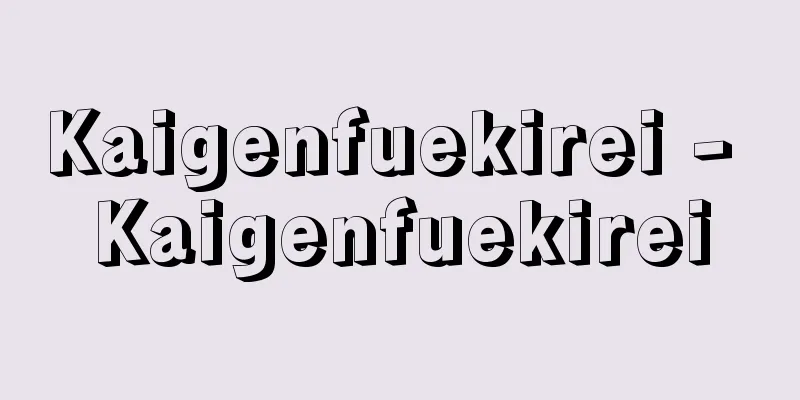
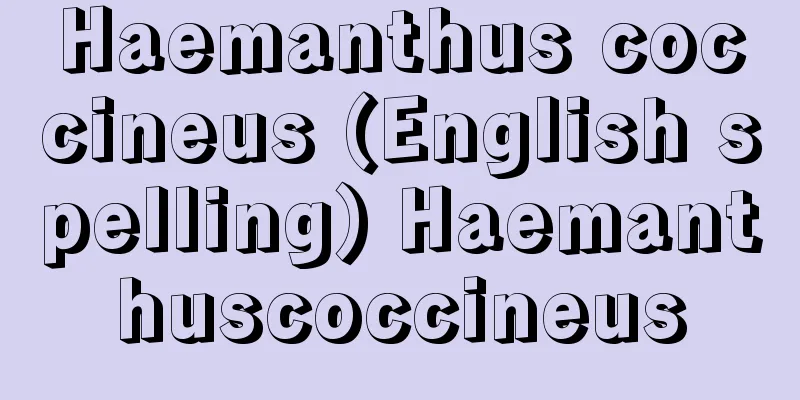
![Nakago [village] - Nakago](/upload/images/67cc62f18078c.webp)
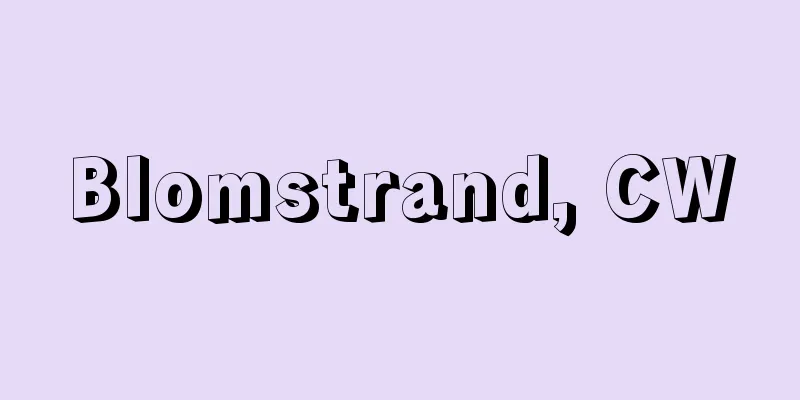


![Arao [city] - Arao](/upload/images/67cadb163ee9d.webp)
